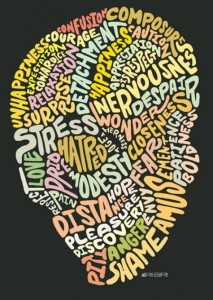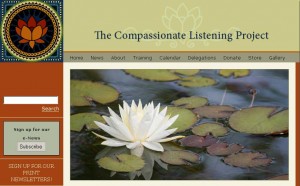Stewing is worse than doing: How to overcome procrastination and overwhelm
Do you ever feel overwhelmed and exhausted by all the things you need to do? And when you feel  overwhelmed, do you sometimes complain, procrastinate and not take any action at all (or spend hours on social media)? And all this time, you are building resistance. You are not alone. Many people can relate to this experience. Resisting and complaining sap your energy. Whenever you feel the build-up of resistance, you want to stop and think about how you can transform that inner resistance into strength and action.
overwhelmed, do you sometimes complain, procrastinate and not take any action at all (or spend hours on social media)? And all this time, you are building resistance. You are not alone. Many people can relate to this experience. Resisting and complaining sap your energy. Whenever you feel the build-up of resistance, you want to stop and think about how you can transform that inner resistance into strength and action.
Stewing is worse than doing.
What causes procrastination?
There may be several causes of procrastination. Here are some common reasons why people procrastinate:
- Poor time management habits;
- Feeling of overwhelm;
- Perfectionism;
- Resistance to the task itself or other people’s expectations;
- Lack of focus, purpose, or commitment;
- Lack of confidence;
- Indecisiveness;
- Fear of failure;
- Fear of success.
So, how do you move from the state of being “stuck” and resistant to acceptance and action?
You have to find your “tapas,” and I am not talking about Spanish appetizers here, albeit delicious. I am talking about one of the Niyamas in yoga – habits and practices of healthy living. The word “tapas” in Sanskrit means heat. You need to build your inner fire of enthusiasm and self-discipline strong enough to burn off any causes of procrastination above. Just like you engage the core muscles in your body to maintain balance, power and control, the following six-pack practices will help you build your mind muscle and start moving forward.
1. Visioning. Connect your project to your core goals and values. Why is it important in the long term? How will it help you become a better version of yourself? What are the potential rewards of your labor? Enthusiasm can grow as you become more engaged in the task. What can help you get into the state of flow?
You can also purposefully generate some external pressure to help your build your inner fire. Talk to people who can motivate you for action. Make public commitments to get things done by certain dates. When other people expect to receive something, you will be more likely to deliver on that promise. Time constraints may be a good thing as they can drive creativity. Create a schedule and a routine around the activities you need to do. Remember that the brain loves patterns and routines. Make sure that your new patterns include a cue to get yourself started and periodic rewards to keep going. This cue – action – reward cycle is at the core of habit formation. What will you do for fun to reward yourself for your great work? Think of little rewards you can give yourself when you complete each part of a longer project.
2. Assessing progress. Organize your thoughts and assess your progress objectively. Mentally run down the list of burning questions you must address. Here are a few favorites to get you started:
- What needs to be done?
- Why would it be desirable to do those things?
- What have you already accomplished that will help you move forward with this project?
- What do you need to know to complete this project?
- What kinds of resources and help will you need when you start working on the project?
- What’s the next action step?
Write out your answers. Writing brings clarity, calmness and objectivity to the mind. Notice any shifts in your mental and emotional states once you have done the exercise.
3. SMART goal setting. Create a plan or action. Define objectives, deadlines, and milestones for your project. It’s time to set SMART goals:
- Specific
- Measurable
- Achievable
- Realistic (but don’t be afraid to stretch yourself)
- Time-defined
Try a three-tier structure for your goals: the theme, the goals to support your theme, and the steps to accomplish your goals.
Your theme can be the big reason behind the project, the main aspect of it, or the crucial learning and development point. The theme helps to unify the parts of the project, provide additional motivation and momentum to move forward.
Break your project into well-defined goals that will serve as the milestones for your work. When deciding upon goals, make them big enough to really stretch your comfort zone. We often underestimate what we can achieve.
Picture the benefits you gain from completing your goals. Visualize the outcomes. How would you know you have accomplished your objective? How will it feel to succeed? Capture your best reasons on paper and return to them when you need extra motivation.
Identify the cost of your goals. Each goal comes with a price tag. What do you have to give up for the opportunity to achieve your goals? Identify those trade-offs and decide if you are truly willing to pay the price.
Prioritize and eliminate inconsistent goals. The goals we set often compete for our time, effort, and resources. It’s important to know the priority of your goals and check for conflicting objectives. You may be as passionate about visiting Italy as you are about traveling to Bali, but you can’t be in two places at the same time. You must choose.
Set a deadline for each of your goals.
Schedule regular intervals to revisit your goals and track your progress.
Finally, divide your goals into smaller tasks or steps, giving each task a target date for completion as well. These steps will give you a clear picture of what you should be working on at any given time.
4. Mental rehearsal. Use procrastination to brainstorm and mentally “rehearse” the project. Give yourself permission to come up with bad ideas and don’t filter anything. Your unrestrained imagination may lead you to innovative solutions. You can also use this time to create a mind map of your project. Those of you with a perfectionist streak may find it therapeutic to produce something fast without worrying too much about quality. Remember, it’s just a rehearsal. That way, you will have something to build on and improve later.
5. Gamification. To make your project more enjoyable, bring in some game elements. Schedule periodic rewards to have something to look forward to. Find a way to get more feedback about your performance by soliciting it from your network or sharing some ideas on social media. Make sketches, draw or doodle to find new creative ways to present information. Take time to daydream as it is associated with increased creativity. Change your surrounding and try working in a coffee shop or park to bring some fresh sensory experiences to your brain. Look for the sources of inspiration.
6. Staying energized. You want to keep your inner fire burning without getting burnt out. Give yourself extra time to plan for any unforeseeable delays. Make sure you get a good amount of sleep. Your brain needs oxygen and nutrients for optimal performance. Both nutrition and exercise directly affect the quality of your thinking. Rest, walks, meditation, listening to music help to recharge your brain. Self-care is not a luxury, it is a prerequisite of productivity.
How do you build your tapas, or inner determination, to stay on course?






